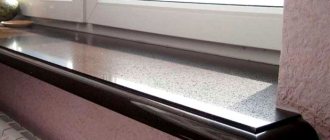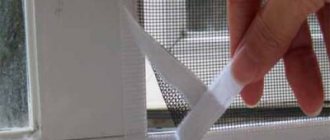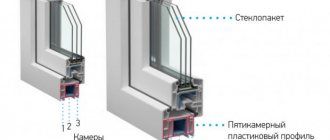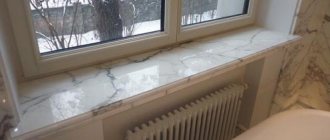Window sill made of Imperador Dark marble
Window sill made of acrylic stone
Michelangelo marble window sill
- window sills made of quartz agglomerate
- window sills made of acrylic agglomerate
- types of end processing
- what does the cost of structures depend on?
- Type of stone
- Stone thickness
- Metering
- Delivery
- Installation
Advantages and disadvantages
Usually window sills are made of plastic. It's inexpensive, relatively aesthetically pleasing, but not very durable and even somehow boring. A window sill made of natural stone will look much more elegant and will last for decades, but you will have to pay a large sum. A compromise solution is artificial stone window sills. The material is made from mineral filler, polymer, dyes and various additives. The result is a product that is difficult to distinguish in appearance from natural stone. Interestingly, the technology was created in 1967 and was initially necessary for bone prosthetics, and only then began to be used in construction.
Advantages of window sills made of artificial stone:
- the cost is much lower than that of natural stone;
- durability up to 50 years with proper care;
- high strength and resistance to loads;
- moisture resistance, since artificial stone has no pores (unlike many natural stones). This window sill can be safely used even in the bathroom. Mold and mildew will not live on it;
- fairly simple restoration when defects appear;
- wide choice - technology allows you to copy the structure of any stone;
- low weight simplifies installation and reduces the load on supports;
- Possibility to order a window sill of any configuration and size. The technology allows you to create fairly large products without seams;
- easy care.
Flaws:
- artificial stone is more expensive than plastic, ceramic tiles, wood and many other materials used to organize a window sill. But the appearance is completely different;
- Some types of artificial stone are afraid of high temperatures, so it’s better not to put anything hot on them (important when organizing a kitchen space).
Artificial stone is made using different technologies. For the manufacture of window sills, quartz agglomerate, acrylic stone, cast marble and polyester stone are used. Each of these materials has its own pros and cons.
Window sill made of acrylic stone
It was with acrylic stone that the era of artificial stone production began. Since its introduction in the 60s, the technology has, of course, changed, but the principle has remained the same. Stone chips (60-70%) are mixed with aluminum hydroxide, acrylic resins and dye. The resulting viscous mixture is poured into a mold, then the material is cooled and molded.
Advantages:
- the ability to get stone of any shape and size, and even large window sills will not have seams;
- the ability to get a window sill with an intricate curved shape;
- variety of design;
- high moisture resistance, strength, durability;
- resistance to temperature changes;
- durability, and the color of the product does not change over time;
- a warm surface, so that if desired, the window sill can be used as a seat;
- high maintainability.
Although acrylic stone is highly durable and resistant to mechanical stress, it may become scratched over time. Therefore, even when cleaning, it is not recommended to use abrasive detergents. But all scratches and other defects can be easily removed during the repair process. Acrylic stone is fire resistant, but constant heating can cause yellowing.
Quartz stone window sill
Quartz stone is as close in properties as possible to natural stone, and in some respects it even surpasses it. It contains almost the same components as acrylic/polyester stone - the difference is only in their quantity. Quartz chips are used as a mineral filler, its part reaches 92-94%. Everything else is polyester resins (or other polymer binders), dyes, additives. The product is formed under the influence of high temperatures and vibration. Production is carried out in a vacuum environment to avoid the introduction of impurities. The result is an artificial stone that is superior to its natural counterparts in many respects.
Advantages:
- highest strength. Quartz stone is superior not only to acrylic stone, but also to granite;
- It is almost impossible to leave scratches on the material, so washing can be done by any means, incl. abrasive;
- moisture resistance due to the absence of pores;
- resistance to high and low temperatures. A hot frying pan or saucepan will not leave a trace, and this is very important for a window sill in the kitchen. Acrylic stone from some manufacturers is damaged when exposed to high temperatures;
- high durability;
- diversity.
There are also disadvantages . It is more difficult to damage a quartz stone than an acrylic one, but if a defect appears, then restoration is almost impossible. The surface of the material is cold, which makes it as similar as possible to natural stone, but with constant use it can cause discomfort.
Video description
This video demonstrates in detail the process of manufacturing a solid countertop or with an opening for a sink, with comments from the manufacturer of a specific product: Using the
casting method, you can make steps, columns and other architectural elements or small interior items from liquid stone. The technology is similar to the production of concrete structures. Here the formwork is also assembled and the mortar is poured. To make products lighter, voids can be formed inside, and reinforcement can be used to strengthen them. And also in order to remove formwork elements, their surface in contact with the composition is pre-treated with an anti-adhesive agent.
An example of a release agent for formwork Source allegroimg.com
Window sill made of cast marble
Natural marble is a beautiful stone, but fragile and porous. In the production of cast marble, it is possible to get rid of some disadvantages. The material is made on the basis of marble chips (up to 80%), a polymer binder and various additives. The result is an agglomerate that is stronger than natural marble. In addition, it is devoid of pores, so it will better withstand exposure to moisture. This stone can withstand temperatures up to +800C, so too hot objects cannot be placed on it. Cast stone is cheaper than acrylic, but has not become widespread.
Manufacturers of artificial stone
Window sills made of artificial stone are made to order. As a result, you receive a unique product that most accurately matches your requirements (size, shape, color, etc.). Companies, as a rule, use ready-made artificial stone, from which window sills are made. There are not so many manufacturers of artificial stone, and there are even fewer good manufacturers.
The largest and most time-tested manufacturers of artificial stone include:
- Corian (USA) is a stone produced by DuPont , which once created the first artificial stone. Produces acrylic stone of the highest quality, in a huge variety of colors and textures;
- Montelli (USA/China) - acrylic and quartz stone with excellent strength characteristics, but a limited range of models. But the manufacturer's prices are excellent. The stone is produced by DuPont;
- Sansung (South Korea) produces acrylic stone Staron , the material contains, among other components, white clay. Products are presented in several collections to simplify selection. The price/quality ratio is one of the best on the market, which made the product popular;
- Akrilika (Germany) produces high-quality and inexpensive products and supplies material in non-standard sizes. Some complain that the company's stone is too fragile, but when it comes to window sills, this is not such a significant drawback;
- LG (South Korea) produces Hi- Macs , which has a reasonable price and fairly good quality;
- Tristone (South Korea) offers a wide range of stone in several collections;
- Hanwha (South Korea) produces Hanex . The assortment is sufficient, the performance quality is also excellent.
The KamenPro company produces artificial stone window sills using materials from leading global manufacturers. There are more than 1200 stone samples of various shades. In 3 days the company will produce a window sill of any shape; it is possible to produce products of complex shapes and intricate edges.
Prices
| A natural stone | Price per sq. meter, rub. |
| Granite | from 9 000 |
| Marble | from 5 680 |
| Onyx | from 12 000 |
| Acrylic agglomerate | Price per sq. meter, rub. |
| Grandex | from 12 000 |
| Biestone | from 12 000 |
| Neomarm | from 14 500 |
| HI-MACS | from 13 500 |
| Corian | from 26 500 |
| Hanex | from 14 000 |
| Staron | from 14 000 |
| Quartz agglomerate | Price per sq. meter, rub. |
| Smartquartz | from 5 900 |
| Silestone | from 14 400 |
| Caesarstone | from 9 200 |
| Avant | from 5 000 |
| Technistone | from 6 440 |
| Vicostone | from 9 100 |
| Radianz Samsung | from 7 300 |
| Radianz Samsung | from 24 500 |
What determines the cost of structures?
When calculating the cost of each stone window sill, you need to take into account all of the listed factors. This will allow you to manage your finances rationally. If you have any questions or want to place an order, leave a request on our website and we will contact you as quickly as possible! The cost is based on the following parameters:
- type of stone used;
- method of processing the material;
- size and complexity of geometric shapes;
- features of the end profile;
- prices for additional services (installation, delivery).
Window sill shape
From the material provided by the manufacturer, companies that manufacture artificial stone window sills can produce products of almost any shape:
- a rectangular window sill is a classic of the genre, appropriate in any room;
- The bay window sill is perfect for decorating bay windows. The product has a semicircular cut;
- a half-bay window with a slight bend looks good in the corner of the room;
- the figured window sill has a complex shape with numerous bends.
If necessary, convection slots so as not to impede the movement of warm air masses. It is especially important to provide for them when the heating radiator is completely or partially hidden by the finishing.
The end of the window sill can be simply smooth or have a figured treatment - the choice depends on the features of the interior. If desired, you can even make an engraving on the end.
Which material retains heat better – acrylic or quartz?
In severe frosts, a window sill made of agglomerate can transfer cold from a wall or window into the room - sometimes condensation from the room air even falls on it. Therefore, when installing such products, the window installation seam (in particular, the area under the ebb) must be carefully insulated with polyurethane foam.
Expert commentary
Vladislav Dobronravov
Leading technical specialist at Okna-Media company
Ask a Question
Acrylic stone insulates heat well, while quartz stone, on the contrary, has very high thermal conductivity.
Curly ventilation slots, made by milling on an automated machine, will not spoil the appearance of the window sill; rather, they will even decorate it
Thermal insulating properties are also important if you install a wide window sill that protrudes into the room. An acrylic product will partially block the upward flow of warm air from the heating radiator, and the window may begin to fog up, so you need to take care of the convection holes in the window sill board in advance. The agglomerate will heat up and form an air flow itself - there is no need for holes.
Window sill dimensions
The length and depth of the window sill depend on the window opening and your own preferences. You can move the window sill out by 10 cm, or by 30 cm, turning it into an additional tabletop. The width depends on the width of the window opening. With thickness , everything is somewhat more complicated. Stone window sills with a thickness of 12 mm are popular, but many experts argue that this is not always enough. In order for the product to be strong, durable, able to withstand loads and be used as a tabletop, it is better to order a window sill with a thickness of 30 mm. Naturally, the greater the thickness, the more durable the product will be.
Color and design
Manufacturers offer artificial stone in different shades - from white to almost black. Which to choose? Depends on the interior and personal preferences. Remember that shades that are too dark and saturated are not suitable for small rooms. You can combine the color of the window sill with another element in the room. In the kitchen, for example, the countertop and window sill can be made of the same material. The same applies to the bathroom. In the living room, you can focus on the color of the furniture. Stone window sills go well with both plastic and wooden windows.
Window sills made of artificial stone look great in any room and fit into any interior style. And the main thing is that they will serve for a long time.
The article was written for the site.
Brief information about installation
Installation of stone window sills is carried out either on a screed or on a substrate. In the case of substrates, a base made of wooden slats or waterproof plywood is attached to a pre-leveled surface.
The latter option involves the use of a single sheet, fixed level at the bottom of the window opening. If slats are used, they are fastened at intervals of 10-15 cm perpendicular to the glazing (the slats should not protrude beyond the wall).
A stone window sill is glued to the fixed base, and it is advisable to use glue of the same composition as the artificial stone binder (acrylic, polyester resins, etc.). The remaining voids (in the case of slats) are filled with mounting foam, and then covered with finishing.
Blitz survey: Which plastic windows are better: German or Russian? From the article you can learn about the advantages of German plastic windows.
Note! Some manufacturers of acrylic window sills glue a plywood base to the bottom of the product directly during manufacture.
Installation on a screed is more often applicable for products made of natural stone and consists of the following:
- A cement or adhesive solution is applied to the pre-leveled surface (the consistency of the solution should not be thin).
- After laying the window sill, gently tap it with a rubber hammer, setting it to the required level.
The side ends are filled with mortar, polyurethane foam or silicone sealant. Until the solution has completely hardened, the window sill must not be subjected to any loads.











